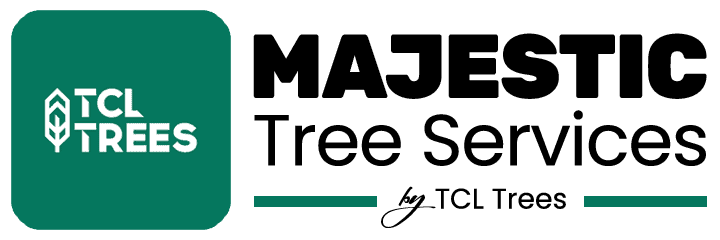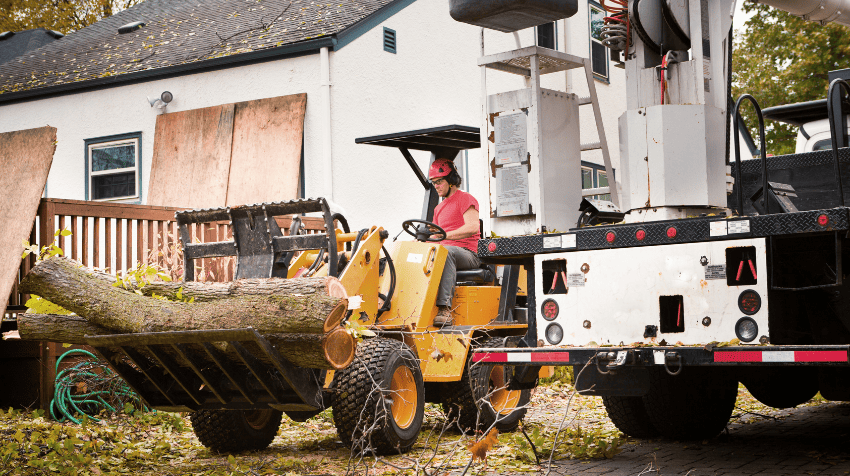Beyond the Storm: Cultivating Resilience in Tree Risk Management
Are you responsible for the management of trees in your area? Whether it’s a small yard or a large public space, understanding and managing the risks associated with trees is essential to ensuring safety and long-term success.
From falling limbs to diseased trunks, every tree poses unique hazards that must be addressed through proper risk management.
In this article, we will explore strategies for successful tree risk management, from identifying potential hazards to developing an emergency response plan.
By following these guidelines, you can take proactive steps towards creating safer and more resilient environments for yourself and those around you.
So let’s dive in and learn how to transform tree risk into tree resilience.
Key Takeaways
- Neglecting tree risk management can lead to serious consequences, including legal implications.
- Conducting a thorough tree inspection is the first step towards identifying potential risks.
- Developing an emergency response plan is crucial for effectively managing tree-related emergencies.
- Working with experienced professionals can help identify potential hazards, assess the condition of trees, and develop a comprehensive risk management plan.
Understand the Importance of Tree Risk Management
You need to understand the importance of tree risk management if you want to prevent accidents and protect your property. Taking a proactive approach towards managing tree risks can help you avoid potential hazards that may cause damage or injury. By identifying and addressing potential issues before they become major problems, you can save yourself time, money, and stress in the long run.
On the other hand, neglecting tree risk management can lead to serious consequences. Trees that aren’t properly maintained or inspected can pose a significant threat to people and property. Falling branches or trees can cause injuries, damage buildings, vehicles, and other structures.
In addition to physical harm, there may also be legal implications for failing to manage tree risks on your property. Therefore, it’s crucial to prioritize tree risk management as part of your overall property maintenance plan.
Identify Potential Hazards
Identifying potential hazards is crucial in ensuring the safety of trees and their surrounding environment. Conducting a thorough tree inspection is the first step towards identifying any potential risks that may pose danger to people or property.
A tree inspection involves assessing the overall health of the tree, its structure, and any potential environmental factors that can affect its stability. Risk assessment is another important aspect of identifying potential hazards.
This process involves evaluating the likelihood of a hazard occurring and its impact on people and property. By conducting a risk assessment, you can determine which trees pose an immediate threat and prioritize them for removal or maintenance.
In addition, regular inspections and risk assessments can help prevent future hazards from occurring by identifying early warning signs before they become major problems. Ultimately, identifying potential hazards through tree inspections and risk assessments is essential in creating a safe environment for everyone involved.
Implement Preventative Measures
Now that potential hazards have been identified, it’s time to take action and implement preventative measures to ensure the safety of your property and those around you.
One of the most important steps in this process is tree inspection. Regular inspections should be conducted by a certified arborist who can identify any signs of disease or damage that could potentially lead to tree failure. Inspections should also include an assessment of the root system, as weak roots can compromise a tree’s stability.
Once potential hazards have been identified through inspection, maintenance planning becomes crucial. Proper maintenance can help mitigate risk by promoting healthy growth and preventing structural defects from forming. This may include pruning dead or diseased branches, removing hazardous trees altogether, or installing support systems such as cables or braces for weaker branches.

By implementing these preventative measures, you can ensure the long-term health and safety of your trees while protecting your property and those around you from potential harm.
Develop an Emergency Response Plan
To effectively manage tree-related emergencies, it’s crucial to have a well-thought-out emergency response plan in place. This will ensure that everyone involved knows what to do and when to do it, minimizing the risk of injury or damage.
Some key steps in developing such a plan include:
- Identifying potential hazards
- Establishing communication protocols
- Defining roles and responsibilities for all parties involved.
The importance of having a plan in place
Having a solid plan in place is crucial for ensuring successful tree risk management, as it helps you prepare for potential hazards and address them proactively.
Risk assessment is an important step in developing an emergency response plan. It involves identifying potential hazards and evaluating the likelihood of them occurring.
Once the risks have been identified, mitigation strategies can be put in place to minimize the impact of these hazards.
Without a proper emergency response plan, you may find yourself unprepared when disaster strikes. This can lead to delays in addressing safety concerns, causing further damage or injury.
With a well thought-out plan, however, you can take proactive measures to prevent accidents from happening and respond quickly if they do occur. By having a clear understanding of your responsibilities and resources during an emergency situation, you can ensure that everyone involved remains safe and secure.
Steps to take in the event of a tree-related emergency
In case of a tree-related emergency, it’s important to remain calm and assess the situation before taking any action. Panic can lead to hasty decisions that may endanger lives or property. Here are some steps you should take in such an event:
-
Call emergency services: Dial 911 or your local emergency number immediately to report the incident and ask for assistance.
-
Secure the area: If possible, cordon off the affected area with warning tape or barricades to prevent anyone from getting too close to the tree. This will reduce the risk of injury or further damage.
- Communicate with stakeholders: Notify relevant parties such as property owners, tenants, neighbors, and insurance companies about what has happened. Keep them informed about any developments regarding the situation.
Having clear emergency protocols in place is essential for effective tree risk management. Communication strategies are also crucial for ensuring that everyone involved is on the same page during an emergency.
By following these steps and having a plan in place, you can minimize risks and maximize resilience when dealing with tree-related emergencies. Remember that safety should always be your top priority in such situations.

Work with Experienced Professionals
You should partner with seasoned professionals to effectively manage tree risks and increase your resilience. Collaborating effectively with experienced arborists, tree care companies, and consulting firms can help you identify potential hazards, assess the condition of your trees, and develop a comprehensive risk management plan. By choosing wisely, you can find experts who have the knowledge, skills, equipment, and insurance needed to provide safe and efficient services.
Working with professionals also means that you can benefit from their expertise in pruning techniques, pest and disease control measures, soil management practices, structural support systems, and other tools that can promote tree health and stability. They can help you prioritize your needs based on factors such as tree age, species characteristics, location, exposure to wind or other stressors.
They can also guide you through the process of obtaining permits or approvals if necessary. Ultimately, by partnering with experienced professionals in managing tree risks, you can save lives and property while preserving the benefits of healthy trees for generations to come.
Frequently Asked Questions
How much does it cost to hire a professional tree risk management service?
Factors affecting the cost of tree risk management services include the size, location, and complexity of the project. Investing in professional tree care can prevent costly damages and liability issues in the future. Prices vary but range from $500-$3000.
What are the legal implications of not managing tree risks on your property?
Not managing tree risks on your property can result in liability consequences, including property damage and personal injury. Insurance coverage may not cover these costs if negligence is determined. Protect yourself by implementing a risk management plan.
How often should trees be inspected for potential hazards?
To ensure safety, trees should be inspected regularly for potential hazards. The frequency and methods of inspection can vary based on factors such as tree species, age, and location. Aim for at least annual inspections by a certified arborist.
Can tree risk management be done by homeowners themselves or is it best left to professionals?
DIY tree risk management can be done by homeowners, but expert recommendations are highly recommended. Homeowners should conduct a tree risk assessment and identify potential hazards at home to ensure safety.
What are some common misconceptions about tree risk management?
You may believe that you can judge a tree’s safety by its appearance, but this is just one of many common myths about tree safety. Tree risk assessment misconceptions abound, so it’s important to consult with professionals before making any decisions.
Related Source
Risk reduction through enhancing risk management by resilience

